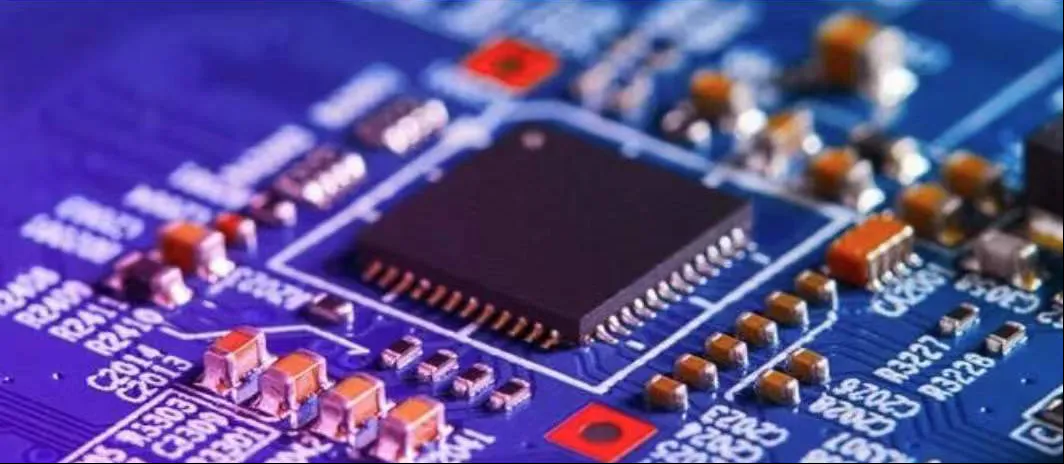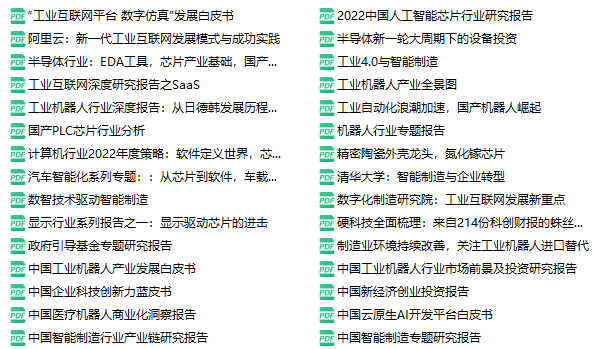

Mergers and acquisitions have always been an important part of the semiconductor industry. With the development of the industry, it is the market law of the semiconductor industry that a group of heroes will rise together.
Negative voices about the dissolution of chip start-ups have also continued recently. First, it was reported that Nuo Ling Technology, an IC design company established in 2018 to focus on the field of cellular IoT wireless communication and determined to be "China Qualcomm", was disbanded. Recently, there are rumors that it was established last year. The CPU chip startup Qi Lingxin "collapsed".
The two companies had not commented as of publication.
It can be seen that the cyclical downturn of this round of consumer electronics has brought more pressure to start-up chip companies.
Faced with the predicament of survival, seeking mergers and acquisitions may be the choice of most chip companies in distress.
It seems like a paradox, but it is actually a conclusion of industry laws.
On the one hand, there are too many new entities, resulting in scattered resources.
Due to the influence of localization and capital boom in China in recent years, the number of semiconductor start-up companies has increased significantly, and the phenomenon of "wall-breaking" poaching has occurred frequently, resulting in a slowdown in the expansion of leading companies;
At the same time, many entrepreneurs can obtain financing, resulting in serious competition for product homogeneity.
When the wave of chip shortages receded with the construction of factories and rampant production expansion, the ensuing capital winter caused many companies that had not yet established a firm foothold in the market to face operational difficulties and could only rely on selling technology or product lines.
On the other hand, the United States formed "Chip4" to suppress the development of Chinese chips.
The United States is planning to form a "Chip 4 Alliance" with South Korea and Japan to establish a semiconductor supply chain. The intention behind this is to curb the development of the semiconductor industry in mainland China.
Recently, there has also been news from South Korea that it intends to participate in the preparatory negotiations of the Chip Quartet. However, at the preparatory meeting, the South Korean government decided to propose to the United States to discuss the future direction of semiconductor cooperation based on two principles, namely, “Participating countries should respect the one-China principle emphasized by China. ” and “No mention of export restrictions to China”.
Under the pressure of the US chip bill, China also needs to find ways to further optimize the structure of the semiconductor industry as much as possible.
It is better to fight alone than to keep warm in a group, and coordinated development has become the main theme of the semiconductor market.
02 Looking at the M&A path from the Big Six
Throughout the global semiconductor industry , we analyze the future development of domestic companies based on the platform growth process of the world's six major design giants.
Broadcom and TI are following roughly the same path, cutting costs and increasing profit margins by divesting low-margin businesses.
For example: Broadcom sold its enterprise flash memory and SSD controller business to Seagate after acquiring LSI;
After the acquisition of the original Broadcom, the IOT business unit was sold for $550 million. Today, Broadcom is a global leader in many product areas.
TI acquired more than 30 semiconductor companies such as Unitrode and National Semiconductor, and successively divested computer microprocessors, storage, mobile phone processors and other businesses, and embarked on the road of focusing on analog ICs.
The pace of ADI and ON Semiconductor is also relatively consistent.
Through the acquisition of Maxim, ADI has absorbed profound experience in the field of power management ICs, helped ADI strengthen its competitiveness in the fields of automobiles and industrial control, and improved its product line of consumer electronics, thereby challenging TI in all aspects.
ON Semiconductor's acquisition of GT Advanced Technologies enhances the company's technical strength and production capacity in the strategic direction of silicon carbide products and smart power supplies.
Combining ON Semiconductor's manufacturing capabilities with GTAT's technical expertise creates a complete map of automotive intelligent perception.
Finally, Renesas' acquisition of Dialog and Infineon's acquisition of Cypress have both generated system-level solutions for the original company, thus forming a new industrial and management ecosystem.
It can be seen that through mergers and acquisitions, companies can expand into new areas and build a large and strong ecosystem while retaining high-profit business areas.
After all, if a large enterprise group wants to enter a new field, in the face of fierce market competition and a rapidly changing market, it takes too long to invest in building factories, developing or introducing new product technologies, recruiting new employees, and developing markets. It is not economical to wait, so it may be more economical and efficient for enterprise groups to use mergers and acquisitions when entering new industries or new businesses.
03 The leading effect of domestic mergers and acquisitions integration
Domestic semiconductor leaders with a history of mergers and acquisitions can be divided into two categories:
One is represented by Huiding Technology, etc., and has been in a leading position in the semiconductor field before the merger;
The other type, represented by Weir shares, has become a leader in domestic semiconductor design through mergers and acquisitions.
Goodix Technology, as the global leader in the field of fingerprint identification chips, when China expressed doubts about the sustainability of its single product's performance improvement, Chairman Zhang Fan repeatedly stated publicly that Goodix Technology can't just eat a bowl of rice, but also Will not guard a technology to eat old.
Subsequently, they integrated the VAS business, acquired the German Dream Chip Technologies GmbH (DCT) team, expanded into emerging fields, seized future market opportunities and made layout plans to further expand their influence in the semiconductor industry.
As a global CMOS giant, Weil shares acquired OmniVision, whose total assets were almost five times that of Weir shares in 2018, making Weir shares the strongest CMOS chip manufacturer in China.
Subsequently, Weil shares acquired "Spicco" and "Vision Source" by issuing shares.
The main business of these two domestic companies is the research and development and sales of CMOS image sensor chips and related products. With the help of many companies, Weir shares have become today.
Leading companies in each industry have deep technical accumulation and mature teams, which help them complete the accumulation from 0 to 10, and the rest is the replication process from 10 to 100, and have the ability to quickly replicate successful experience in a short period of time. Therefore, the reasons for building a domestic leading enterprise are self-evident.
In addition to the evolution of technologies and products, policies are also one of the most needed supports for leading companies.
The semiconductor industry needs to go from face-to-face inclusive support to point-of-point accurate support, analyze the special situation of each leading company in detail, and implement policies and fixed-point support according to the enterprise. With leading enterprises as the main body, appropriate multi-point layout.
Create conditions for leading companies to build factories in joint ventures with other companies, or take mature entities as the core and build factories in multiple places by means of equity participation and joint ventures.
This not only solves the problem of brain drain of leading enterprises, supports the expansion of industrial production, but also solves the demands of local governments to build lines.
04Which companies need to be integrated?
low-revenue business
According to the sales data of chip design companies in 2021, among the 2810 chip design companies, 413 companies are expected to have sales of more than 100 million yuan, and the total sales of these 413 companies with sales of more than 100 million yuan will reach 328.83 billion yuan, accounting for the entire industry The proportion of the total sales was 71.7%.
This means that the sales of the remaining 2,397 companies are only 129.86 billion yuan, and 85% of the companies only contributed 28.3% of the sales, which is enough to show that the polarization is very serious.
In the face of powerful large companies, small and medium-sized enterprises can be said to have no price competitive advantage, and the fragmented market has led to higher and higher demand for custom chips, but custom designs and advanced nodes mean higher R&D investment, IP and The cost of tape-out has become a bottleneck that is difficult for small and medium-sized enterprises to break through.
The last phenomenon is that there are products but no sales, and there are sales but no profits. Perhaps these companies can consider the path of mergers and acquisitions.
Homogeneous competitive low-end products
Homogeneous competition is an unavoidable common problem in various industries. To survive, companies cannot develop high-end products and are forced to share the squeezed profits in the low-end product market.
This phenomenon is more prominent in the field of power semiconductors and power management chips. Companies are generally small and scattered and have fierce competition, which leads to redundant construction and easy to cause excess capacity.
In addition, with the support of financing power, there are few mergers and acquisitions among peers, which makes it extremely difficult for technology companies to list on the domestic securities market, and also severely restricts the emergence of industry leaders.
Financing only, no product
At the China Computer Federation (CCF) Chip Conference, which ended on July 31, Wei Shaojun, a professor at Tsinghua University, said:
The product capability of domestic server chips is far from enough to have sufficient market competitiveness.
In contrast, a large number of computing chip startups spawned by the data age have now turned into "financing monsters".
However, the phenomenon of only financing but no product output occurs not only in this track, but is very common in the entire semiconductor industry.
The semiconductor industry has the characteristics of capital-intensive, technology-intensive, and talent-intensive. Investors only understand the technology and the professional background of the team, ignoring the feasibility of investment, which leads to money being invested, but no product is available, and R&D capabilities cannot keep up. Financing level, typically relying on financing to support employees.
This kind of enterprise is also a huge waste of resources for the market.
Mergers and acquisitions not only mean strong alliances, but also reduce competitors in exchange for a larger market. The mergers and acquisitions completed by domestic semiconductor companies have also established their leading position in the domestic semiconductor market segment to a certain extent.
05 Difficulties and acquisition strategies
Domestic corporate mergers and acquisitions are mainly concentrated in the field of analog chips, which is determined by the variety and fineness of analog chips.
In the mode of mergers and acquisitions: through horizontal mergers and acquisitions, enterprises can increase market share, form economies of scale, and become market leaders.
In contrast to vertical mergers and acquisitions, since the initiators of mergers and acquisitions will enter unfamiliar links in the upstream and downstream of the industry chain, they have put forward extremely high requirements on their business, financial, technical management and even corporate governance levels.
In the manufacturing process: For the upstream of the semiconductor industry, such as EDA, IP, semiconductor equipment, and semiconductor materials.
Although their market size is not as large as that of IDM, Fabless and Fonudry in the midstream, it directly affects and even determines the industrial ecology of the midstream and downstream. The function of moving the whole body is also subject to more and more restrictions.
Secondly, in recent years, international trade restrictions have intensified, which has made it more difficult to acquire upstream companies in the semiconductor industry chain. Under the pressure of "double shackles", the success probability of upstream companies' mergers and acquisitions is getting lower and lower.
06 Conclusion
Since the beginning of 2022, news of corporate mergers and acquisitions has appeared in China one after another.
For example, in March this year, Shanghai Belling planned to acquire Sita Technology, in May, Weir shares planned to increase its holdings in Beijing Junzheng, and in June, Yangjie Technology acquired 40% of the shares of Chuwei Semiconductor.
The current policy environment in China and the characteristics of the capital market are favorable for mergers and acquisitions.
The digital economy has spawned demand for semiconductors, and many giants including Qualcomm, Texas Instruments, and Samsung Semiconductor have also stated that they will continue to increase investment in China in the future to form an integrated layout of production and research.
And domestic semiconductor leading companies should also play their leading role, avoid repeated low-end market involution, actively deploy the demand for semiconductors in emerging fields, expand semiconductor products required in emerging application scenarios, and deploy as soon as possible to seize market opportunities.




The forefront of science and technology innovation is a new media that focuses on reporting technology to promote industrial innovation.
We focus on the development of China's science and technology innovation industry, explore the rising stars of science and technology enterprises, deeply track the dynamics of leading technology companies and the capital layout of the technology industry, and promote the implementation of technology in the fields of consumption, travel, education, entertainment, real estate, and medical care.


